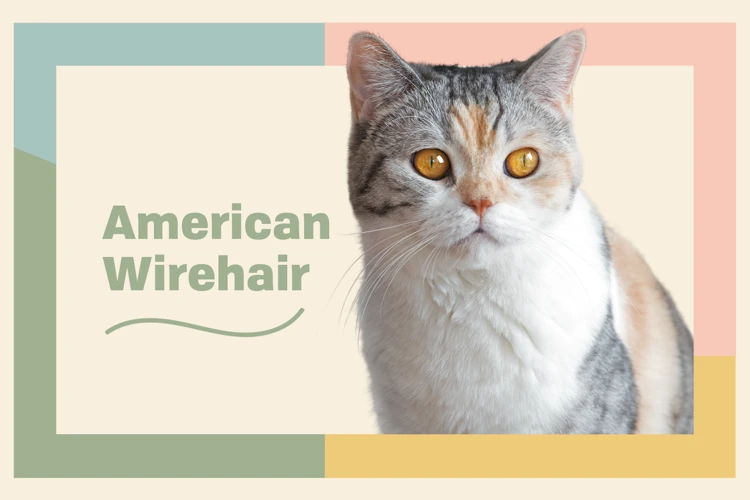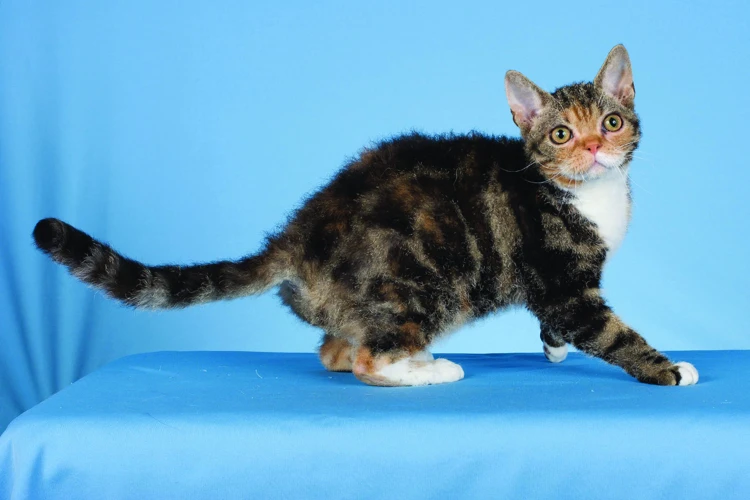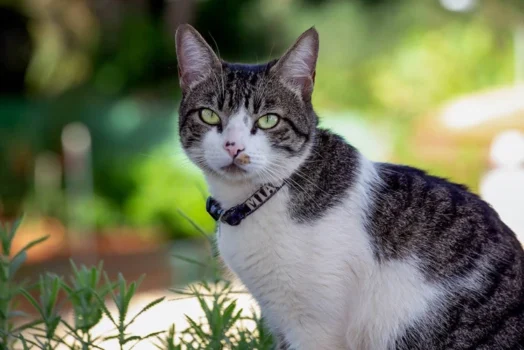As a pet owner, you want your American Wirehair to be happy and comfortable around other animals. However, introducing your feline friend to other pets can be a challenging and stressful experience for both you and your cat. If you’re struggling to get your American Wirehair to socialize with other pets, don’t worry – you’re not alone. In this article, we’ll explore some effective tips and techniques to help you train your American Wirehair to be more social with other pets. With a little patience and effort, you’ll soon have a happy and well-adjusted kitty that feels comfortable around all kinds of animals.
Understanding your American Wirehair’s Personality

Understanding your American Wirehair’s Personality is key to successfully training them to socialize with other pets. As a Wirehair owner, it’s important to understand the unique personality traits and social behavior of your pet. This will help you to create a tailored approach to training them effectively. In this section, we’ll explore the various personality traits and social behavior of the American Wirehair. By the end, you’ll have a good understanding of your pet’s personality and behavior, which will help in creating an effective socialization training plan.
1.1. American Wirehair Personality Traits
American Wirehairs are known for their unique characteristics that make them stand out from other cat breeds. They have distinctive wiry coats with crimped hair that resembles that of a sheep. Aside from their striking appearance, they also possess personality traits that make them one-of-a-kind furry companions.
1. Adaptability: American Wirehairs are highly adaptable to different environments and lifestyles. They can thrive in both quiet households and busy ones, making them great pets for families with children or other pets.
2. Intelligence: These felines are intelligent creatures that can be trained to perform simple tricks and obey commands. Consistent training with rewards and positive reinforcement can go a long way in bringing out their best behavior.
3. Affectionate: Although American Wirehairs may not be the most vocal of cats, they love to show affection through physical touch. They enjoy cuddling up with their owners, and some even enjoy sleeping in their laps.
4. Playfulness: These cats have a playful spirit, and they enjoy interacting with toys and their owners. They have a natural curiosity and get entertained by exploring their environment.
5. Territorial: American Wirehairs can be territorial and may become aggressive towards intruders or other pets who they perceive as threats.
It’s important to keep these personality traits in mind when socializing your American Wirehair with other pets. By understanding their characteristics, it will be easier to train them effectively and address any issues that may arise during the process.
If you want to learn more about training other aspects of your American Wirehair, such as litter box training, scratching habits, obedience, or aggressive behavior, check out our other articles on the topic: How to Train Your American Wirehair to Use the Litter Box, Teaching Your American Wirehair to Stop Scratching, How to Train Your American Wirehair to Come When Called, The Importance of Teaching Your American Wirehair Obedience, and Dealing with Aggressive Behavior in American Wirehairs.
1.2. American Wirehair’s Social Behavior
The American Wirehair is a friendly and social breed that enjoys being around its human companions. However, when it comes to socializing with other pets, their behavior can vary widely. Here are a few factors that can influence an American Wirehair’s social behavior with other animals:
| Factor | Description |
|---|---|
| Age | Younger American Wirehairs are generally more open to socializing with other pets as they are still developing their personalities and behaviors. Older American Wirehairs may be more set in their ways and less accepting of new companions. |
| Gender | Gender can also play a role in how American Wirehairs interact with other animals. Female American Wirehairs tend to be more accepting of new pets, while male American Wirehairs may exhibit more dominant behavior or aggression toward unfamiliar animals. |
| Previous Experiences | An American Wirehair’s past experiences with other animals can shape their social behavior. If a wirehair had a negative experience, such as being attacked by another pet, they may exhibit fear or aggression toward other animals in the future. |
| Territorial Instincts | Like many other animals, American Wirehairs can exhibit territorial behavior. If they feel that their territory (such as their home or favorite spot) is being threatened by another pet, they may exhibit aggression or other defensive behaviors. |
Understanding these factors can help you better address your American Wirehair’s social behavior and improve their socialization with other pets.
Training your American Wirehair to be More Social with Other Pets

Now that you have a better understanding of your American Wirehair’s personality and social behavior, it’s time to start training them to be more comfortable and social around other pets. This can be a difficult process, but with some patience and the right approach, you can help your cat become a happy and well-adjusted member of your household. Follow these tips and techniques for training your American Wirehair to socialize with other pets.
2.1. Start by Introducing your American Wirehair to One Pet at a Time
When introducing your American Wirehair to other pets, it’s best to start slowly and introduce them to one pet at a time. This allows your cat to become familiar with the new pet’s scent and behavior and is less overwhelming than introducing them to multiple pets at once.
Introducing American Wirehair to a new pet:
| Step 1: | Begin by allowing your American Wirehair and the new pet to smell each other through a closed door. This gives them an opportunity to investigate one another without any physical contact. |
|---|---|
| Step 2: | When they are both comfortable with each other’s scent, you can allow them to interact through a baby gate or a screen door. This barrier allows them to see each other and interact without any direct physical contact. |
| Step 3: | If everything seems to be going well with the introduction, you can then allow them to have direct physical contact while under your strict supervision. Make sure to keep a close eye on their behavior and intervene if necessary. |
It’s important to take your time during this process and pay close attention to your pets’ behavior. If either pet seems uncomfortable or shows signs of aggression, it may be best to take a step back and try again at a later time. Remember to always provide positive reinforcement, treats, and playtime to reward good behavior and encourage your American Wirehair to feel comfortable and confident around other pets.
2.2. Use Positive Reinforcement to Reward Good Behavior
When training your American Wirehair to socialize with other pets, it’s crucial to use positive reinforcement to reward good behavior. Positive reinforcement is simply rewarding your cat for doing what you want them to do, instead of punishing them for doing something wrong. This method of training has been proven to be much more effective and humane than punishment-based training.
How to use positive reinforcement:
To use positive reinforcement, you need to provide your American Wirehair with a reward every time they display desirable behavior. Rewards can be anything your cat likes, such as treats, toys, or cuddles. However, it’s essential to choose a reward that your cat finds highly motivating.
The benefits of positive reinforcement:
The benefits of positive reinforcement training are numerous. Firstly, it helps build a strong bond between you and your cat. Your American Wirehair will learn to trust you and will want to please you. Secondly, it helps to create a positive association with the training process. Instead of your cat feeling intimidated or afraid of training, they will see it as a fun and enjoyable experience.
Examples of positive reinforcement:
There are many ways to use positive reinforcement when training your American Wirehair. Below are some examples of how to reward your cat for good behavior:
| Desirable behavior | Reward |
|---|---|
| Approaching another pet calmly | A treat or praise |
| Playing nicely with another pet | Extra playtime or a favorite toy |
| Ignoring another pet | A cuddle or a treat |
It’s important to note that rewards should be given immediately after the desired behavior is displayed. This way, your cat will know exactly what they did right and will be encouraged to repeat the behavior in the future.
Positive reinforcement is a highly effective way to train your American Wirehair to socialize with other pets. By rewarding desirable behavior, you will build a strong bond with your cat and create a positive training experience. So, be sure to incorporate positive reinforcement into your cat’s training regimen and watch as they become more sociable and confident around other pets.
2.3. Incorporate Playtime and Treats
Incorporating playtime and treats into your American Wirehair’s socialization training can be a great way to encourage positive interactions with other pets. Here are some tips:
| Step: | Set aside time for playtime with your American Wirehair and the other pet(s). Start with short sessions of 5-10 minutes and gradually increase the length of playtime as your pets become more comfortable with each other. |
| Tip: | Be sure to play with each pet separately as well, so that they don’t feel like they have to compete for attention. |
| Step: | Reward positive interactions with treats or praise. Make sure that the treats are small and healthy, so that your pets don’t become overweight. |
| Tip: | Use treats that are safe for both pets, and avoid giving them anything that could be harmful, such as chocolate or grapes. |
| Step: | If your American Wirehair shows signs of aggression or fear during playtime, stop the session immediately and try again at a later time. |
| Tip: | Don’t force your pets to interact or play if they don’t want to. Respect their boundaries and try again later. |
Remember, incorporating playtime and treats into your American Wirehair’s socialization training can be a fun and rewarding experience for both you and your pets. Just be patient and take it slow!
2.4. Supervise at First, Gradually Increase Interaction Time
As your American Wirehair begins to interact with other pets, it’s important to supervise their behavior closely, initially. Gradually increasing the duration of their interaction over time is a key component of successful socialization. Here are some important considerations to keep in mind as you navigate this phase of the training process.
Supervision
Your supervision during the first few interactions is critical to guide your American Wirehair’s behavior, analyzing its body language and preventing any aggressive behavior towards other pets. Make sure you’re in the same room with your pets, close enough to prevent any accidents or rough behavior.
Gradual Increase in Interaction Time
Gradually increase interaction time over multiple sessions to ensure your pets slowly get used to each other’s presence. Begin with just a few minutes and slowly build up to longer sessions depending on how well your pets interact with each other.
Watch for Body Language
It’s essential to pay close attention to both your American Wirehair and other pets’ body language during interactions. Look for signs of discomfort or fear in your pets. If your American Wirehair or the other pet seems anxious, stop the interaction and try again later during the day.
Correcting Behavior
If your American Wirehair exhibits any aggressive behavior, immediately correct the behavior by firmly saying “No” or “Off”. Avoid negative reinforcement such as physical punishment as it can harm your pet. Instead, reward your American Wirehair’s good behavior with positive reinforcements such as treats or playtime.
Develop a Positive Environment
Create a positive environment for your pets to coexist. Ensure your American Wirehair has access to its toys, a comfortable spot to rest, and plenty of fresh water. Also, pets are drastically affected by scents and smells, so eliminate any strong odors that could cause stress for your pet and others. By creating the best possible environment, you increase the likelihood of a successful interaction between your American Wirehair and other pets.
By supervising your pet and gradually increasing interaction time, you can train your American Wirehair to socialize with other pets effectively. Watching for body language and correcting any aggressive behavior, while creating a comfortable and positive environment is key to successful socialization. Gradual exposure and positive reinforcement create a healthy and happy environment, allowing your American Wirehair to make new pet friends.
2.5. Be Patient and Don’t Rush the Process
Training your American Wirehair to socialize with other pets is a process that requires patience. It’s important not to rush this process and take the necessary time to ensure that your pet can develop a positive relationship with other animals. Here are some reasons why you should be patient and not push your pet too quickly:
- Stress – introducing your American Wirehair to new pets can be a stressful experience for them. Stress can cause many negative behaviors, including aggression and fear. If you push your pet too quickly, it may only increase their stress and make the process more difficult.
- Adjustment – every pet has their own personality and temperament. They need time to adjust to each other’s presence and become comfortable with each other. If you rush this process, it may negatively affect their ability to adjust, and they may not develop a positive relationship with each other.
- Trust – building trust between pets takes time. If you push your American Wirehair too quickly to become friends with other pets, it may lead to a lack of trust and a negative relationship. Building trust takes patience and consistency.
- Positive reinforcement – positive reinforcement is a key component of pet training. It’s essential to reinforce good behavior with treats and praise. If you rush the process, you may not have enough time to reinforce good behavior and may miss out on opportunities to praise and reward your pets.
It’s important to be patient when training your American Wirehair to socialize with other pets. Taking the necessary time to ensure a positive relationship between pets is crucial. Pushing your pet too quickly can lead to stress, an inability to adjust, a lack of trust, and missed opportunities for positive reinforcement. Stay calm, consistent, and patient, and you’ll be rewarded with a happy and well-socialized pet.
Common Issues and How to Address Them
As much as we would like our American Wirehairs to get along with all pets, sometimes issues arise during the training process. However, with the right approach, these problems can be addressed effectively. In this section, we will cover some common issues that may arise when training your American Wirehair to socialize with other pets. We’ll also provide practical tips on how to tackle these challenges, so you can enjoy harmony at home with all your furry friends. Let’s dive in.
3.1. Aggression Toward Other Pets
It can be frustrating and concerning if your American Wirehair shows aggression toward other pets. However, with patience and consistent training, this behavior can be corrected.
Identifying the Cause of Aggression
The first step in addressing aggression is to identify the cause. Is your American Wirehair feeling threatened or territorial? Is there a history of bad interactions with the other pet? It’s important to understand the root of the issue before attempting to correct the behavior.
Training Tips
Once the cause of the aggression is identified, there are several training tips that can be implemented. One effective method is desensitization, gradually exposing your cat to the presence of the other pet while rewarding calm behavior.
Another training technique for aggression is counter-conditioning, which involves pairing the presence of the other pet with positive experiences, such as receiving treats or praise.
When to Seek Professional Help
If your American Wirehair’s aggression does not improve with training, it may be necessary to seek professional help. A veterinarian or animal behaviorist can provide further guidance and support.
It’s important to note that aggression in cats can also be a sign of an underlying medical condition, so visiting a veterinarian is always recommended to rule out any potential health issues.
Preventing Aggression
Preventing aggression in the first place is always preferable to correcting it. One way to do this is to properly introduce your American Wirehair to other pets in the household, ensuring that they are introduced gradually and in a controlled environment.
It’s also important to provide your cat with plenty of toys and activities to keep them mentally and physically stimulated, which can help prevent boredom-induced aggression.
| Training Tips | When to Seek Help | Prevention Methods |
|---|---|---|
| Desensitization | Aggression does not improve with training | Proper introduction to other pets |
| Counter-conditioning | Underlying medical condition is suspected | Provide plenty of toys and mental stimulation |
3.2. Fear or Shyness Toward Other Pets
It is not uncommon for American Wirehairs to exhibit fear or shyness towards other pets. If your cat displays such behavior, it is essential to address it promptly to avoid further complications. Here are some tips to help your American Wirehair overcome their fears and shyness towards other pets:
1. Slow and Steady Wins the Race: Do not rush things. Introduce your American Wirehair to other pets slowly and gradually. Start by allowing the pets to sniff each other from a distance. Once your cat gets comfortable with the other pet’s presence, you can move on to supervised interaction.
2. Positive Reinforcement: Use treats and toys to associate positive feelings with other pets. When your American Wirehair displays even the slightest interest in the presence of other pets, reward them. Over time, they will associate the company of other animals with positive feelings.
3. Create a Safe Space: Create a safe space for your American Wirehair where they can retreat if they feel overwhelmed or anxious. This could be a perch or a cat tree, where they can observe other pets without feeling threatened.
4. Consistency is Key: Consistency is crucial when it comes to helping your American Wirehair become more comfortable with other pets. Stick to a routine, and don’t give up if your cat is not making progress as quickly as you had hoped. Patience and perseverance will pay off in the end.
5. Seek Professional Help: If your American Wirehair is displaying extreme fear or aggression towards other pets, it is advisable to seek professional help. A pet behaviorist can help you identify the root cause of the problem and work with you to come up with a plan to address it.
By taking the above steps, you can help your American Wirehair overcome their fears and shyness towards other pets. Remember that every cat is different, so it may take time and patience to see progress. With perseverance, your American Wirehair can eventually learn to live harmoniously with other pets in your household.
3.3. Disinterest in Other Pets
It is possible that your American Wirehair may show disinterest towards other pets, which can make the socializing process challenging. However, there are some tips you can use to help your cat become more interested in their furry friends.
1. Introduce Variety
Your American Wirehair may be disinterested in other pets if they have only been introduced to one type of animal. Try introducing them to different types of animals, such as birds, dogs, or rabbits, to expose them to different scents, behaviors and sounds. This may spark their curiosity and interest.
2. Encourage Social Interaction
Encourage your American Wirehair to approach other pets by gently nudging them towards their new friend. Use toys and treats to help entice them to engage in play.
3. Be Positive and Consistent
It’s critical to remain positive and consistent when teaching your American Wirehair to socialize with other pets. Keep introducing them to other animals in a patient and calm manner, even if they don’t immediately reciprocate interest. Even a small step towards socializing is progress.
4. Seek Professional Help
If your American Wirehair continues to show disinterest in other animals, you may want to consider seeking professional help. A veterinarian or animal behaviorist can help determine if there are underlying medical or behavioral issues that need to be addressed.
With the right guidance and patience, you can encourage your American Wirehair to become interested in other pets and enjoy a happy and healthy social life alongside their furry friends.
Conclusion
After following the aforementioned tips for training your American Wirehair to socialize with other pets, you should see a noticeable improvement in their behavior. Remember that each cat is unique and may require different approaches to training. By understanding your American Wirehair’s personality and social behavior, you can tailor your training methods to best suit their individual needs.
It is important to remain patient and consistent throughout the training process. Using positive reinforcement and keeping interaction sessions short at first can help build your American Wirehair’s confidence and ease any anxiety they may feel around other pets.
If you encounter any issues during training, such as aggression or fear toward other pets, don’t hesitate to seek advice from a professional trainer or behaviorist. Addressing these issues early on can prevent more serious problems from developing in the future.
Overall, with time and effort, you can successfully train your American Wirehair to be more social with other pets. The key is to remain patient, consistent, and attentive to your cat’s individual needs. By doing so, you can help your American Wirehair live a happy, healthy, and sociable life.
Frequently Asked Questions
What is the temperament of an American Wirehair?
American Wirehairs are known for their friendly and affectionate personalities. They are also intelligent and enjoy playing, making them excellent companion pets.
How do American Wirehairs typically behave around other pets?
Each cat is unique in how they behave around other pets. But in general, American Wirehairs are social and can get along well with other cats, dogs, and even small animals as long as they have been properly socialized.
At what age should I start socializing my American Wirehair?
The earlier, the better. Experts recommend beginning the socialization process when your American Wirehair is still a kitten, around 3-7 weeks old.
What is positive reinforcement and why is it important in training my American Wirehair?
Positive reinforcement means rewarding your cat for good behavior with treats, toys, or praise. It is important in cat training because it helps enhance desirable behavior while discouraging negative ones.
How can I tell if my American Wirehair is afraid or uncomfortable around other pets?
Some signs that your cat may be anxious or frightened around other pets include excessive hiding, hissing, growling, and swishing their tail back and forth quickly. They may also flatten their ears or show their claws.
What should I do if my American Wirehair shows aggression towards other pets?
If your American Wirehair shows aggression, it is important to separate them from the other pet immediately. Work with a behaviorist or trainer to find the root of the issue and address it properly.
How long does it usually take to socialize an American Wirehair with other pets?
The length of time it takes to socialize your American Wirehair with other pets depends on their personality, temperament, and past experiences. It can take anywhere from a few weeks to several months, so be patient and take it slowly.
Can I socialize my American Wirehair with other pets if they are already adults?
Yes, adult cats can still be socialized to get along with other pets. However, it may take longer and require more patience and effort. Again, working with a behaviorist or trainer can be helpful.
What are some fun ways I can incorporate playtime into socialization training with my American Wirehair?
You can use different toys and games during playtime to help your American Wirehair associate positive feelings with the presence of other pets. Some fun ideas include interactive toys, puzzle feeders, and playing hide and seek.
What if my American Wirehair shows disinterest in other pets?
Not all cats are social butterflies, and it is possible that your American Wirehair simply prefers to be alone. If this is the case, it is important to respect their boundaries and not force them to socialize if they do not want to.







